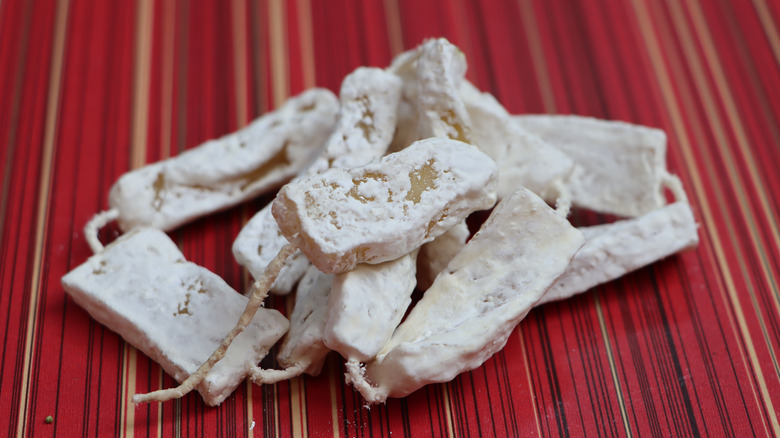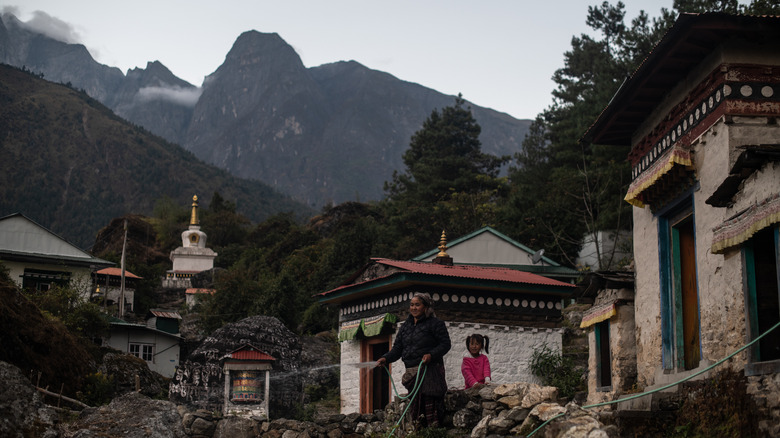This Himalayan Cheese Might Be The Hardest In The World
If you're a dairy head, you're probably no stranger to unique cheeses — and if you're reading this right now, there's a good chance you've sampled a fine cheese or two in your time. At most supermarkets, shoppers can choose from a selection of everything from Camembert to dairy-free cheese alternatives. Whatever your preference, the world is home to countless different regional cheeses. And of the known varieties, there's one that's generally considered the hardest cheese in the world.
Chhurpi is primarily made in the remote village of Parvathy Kund in the Nepalese Himalayas (per BBC), but the earliest recorded evidence of chhurpi-making dates back to thousands of years ago. Unlike most cheese, which often comes from goats or cows, this one is a product of the chauri, a cross between a yak and a cow. In fact, according to travel platform Great Big Story, many chhurpi cheesemongers are often also chauri herders. Chauri eat a diet of particular local grasses and herbs, it says, which play a big role in the flavor and nutritional value of the milk and cheese they produce. Since it bears such specific, regional flavors, you may wonder what chhurpi actually tastes like, and what makes it the hardest cheese out there.
A hidden gem
Chhurpi cheese has a smoky aroma and a sweet taste, per Great Big Story, and, despite its initial bite already being super hard, it becomes even tougher the more you chew (via BBC). According to the authorities at cheese.com, chhurpi belongs to the cottage cheese family, owing to its crumbly, dense texture, tangy flavor, and pale yellow color. After skimming, chhurpi cheese curds are cured for 2 to 3 days before being dried in an oven or outside in the sun and fermented at least six to 12 months. This process ultimately creates a cheese with a very low moisture content, which is partly responsible for its toughness. But chhurpi's low moisture content also lends to its almost supernatural shelf life of up to 20 years. This impressive longevity makes the cheese hugely desirable among Himalayan yak herders, who travel for long stretches of time between stops.
Another contributing factor to chhurpi's legendary hardness is the high altitude of Parvathy Kund. The village sits at an elevation of about 4,000 meters, says BBC, in the middle of the Himalayas, which World Atlas calls "the greatest mountain system in Asia." Plus, according to the BBC, the grazing and processes of chhurpi production make the cheese naturally organic, preservative-free, low in fat, and high in protein. It may be a stretch, but we're about ready to call chhurpi a superfood.

